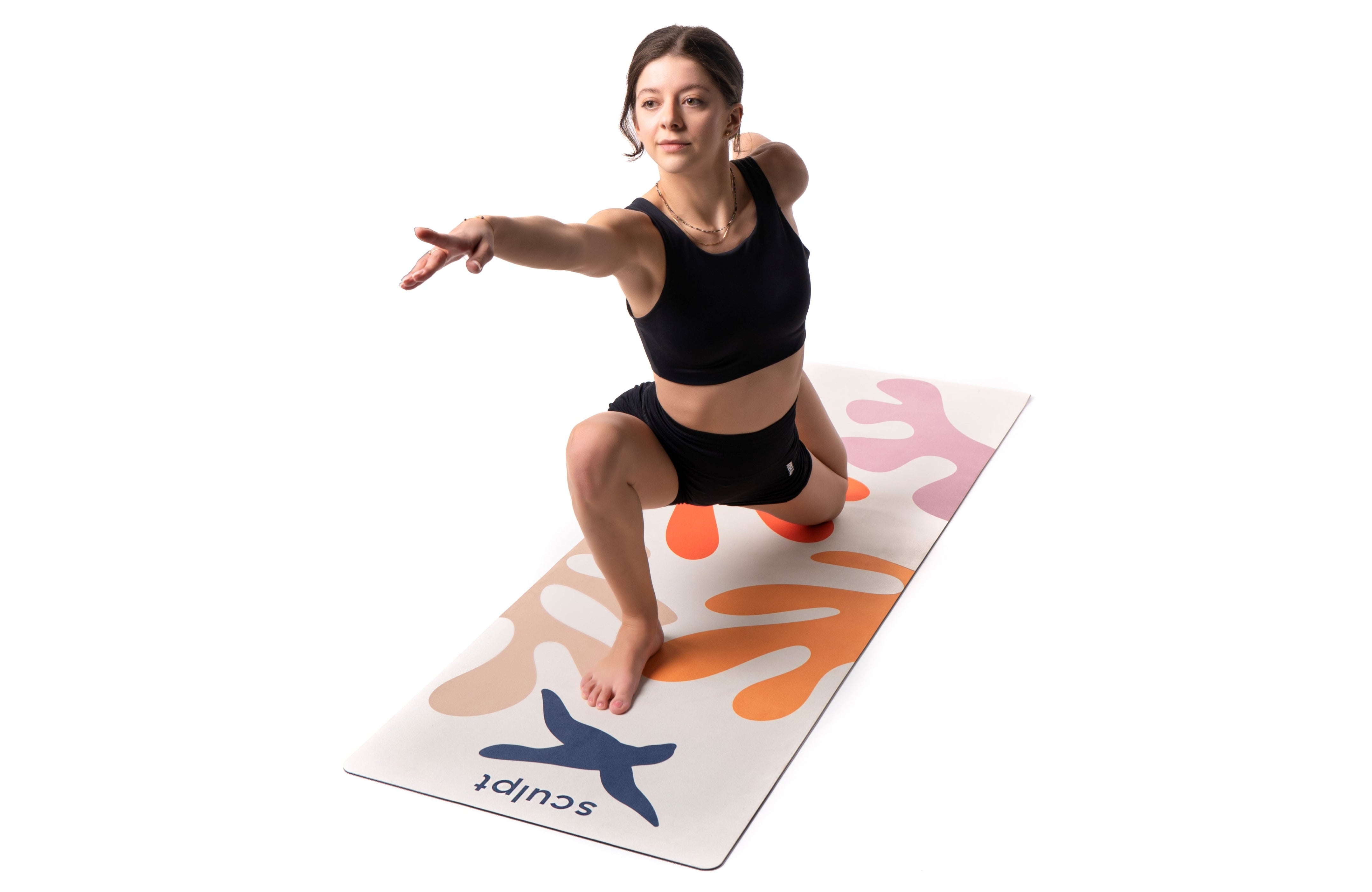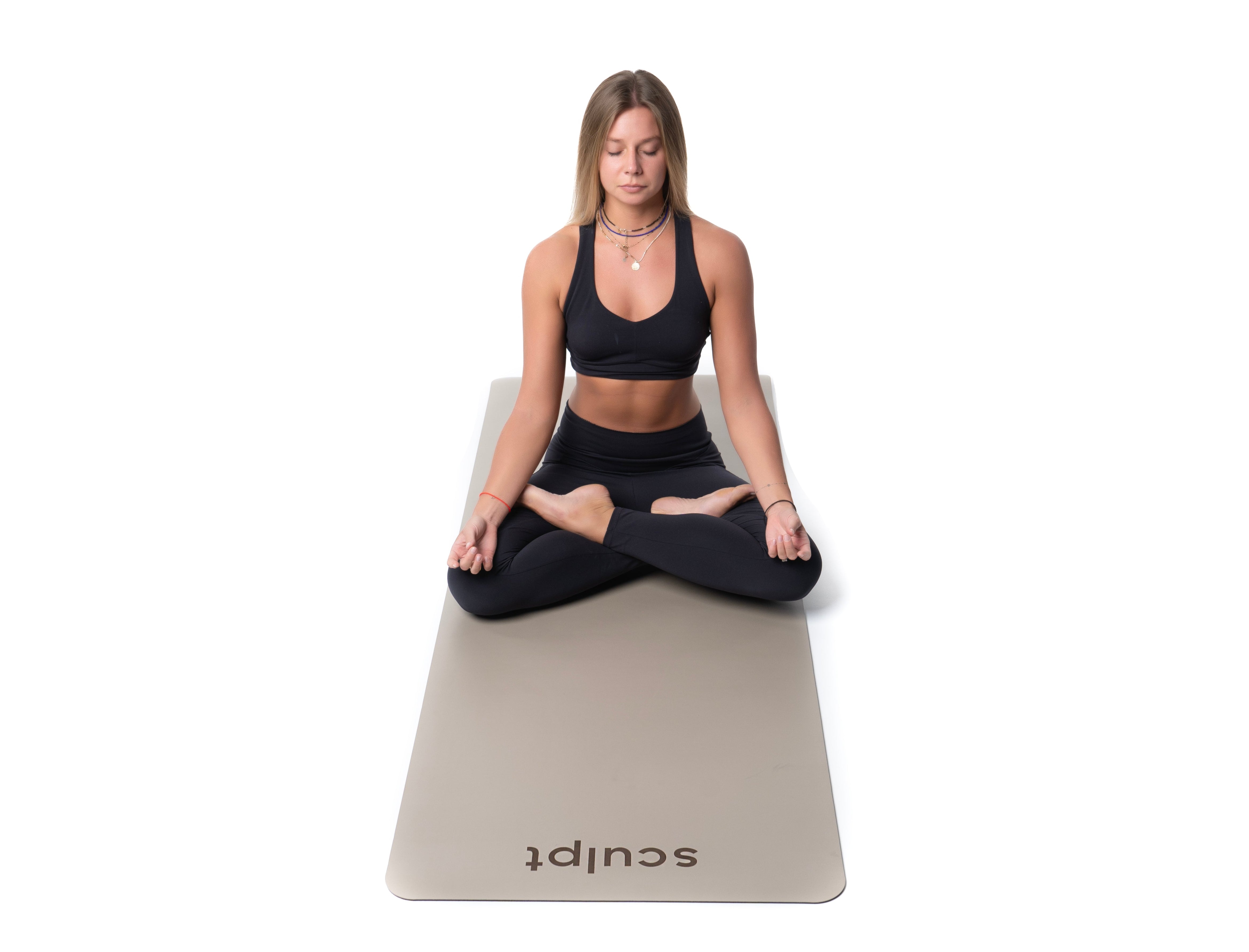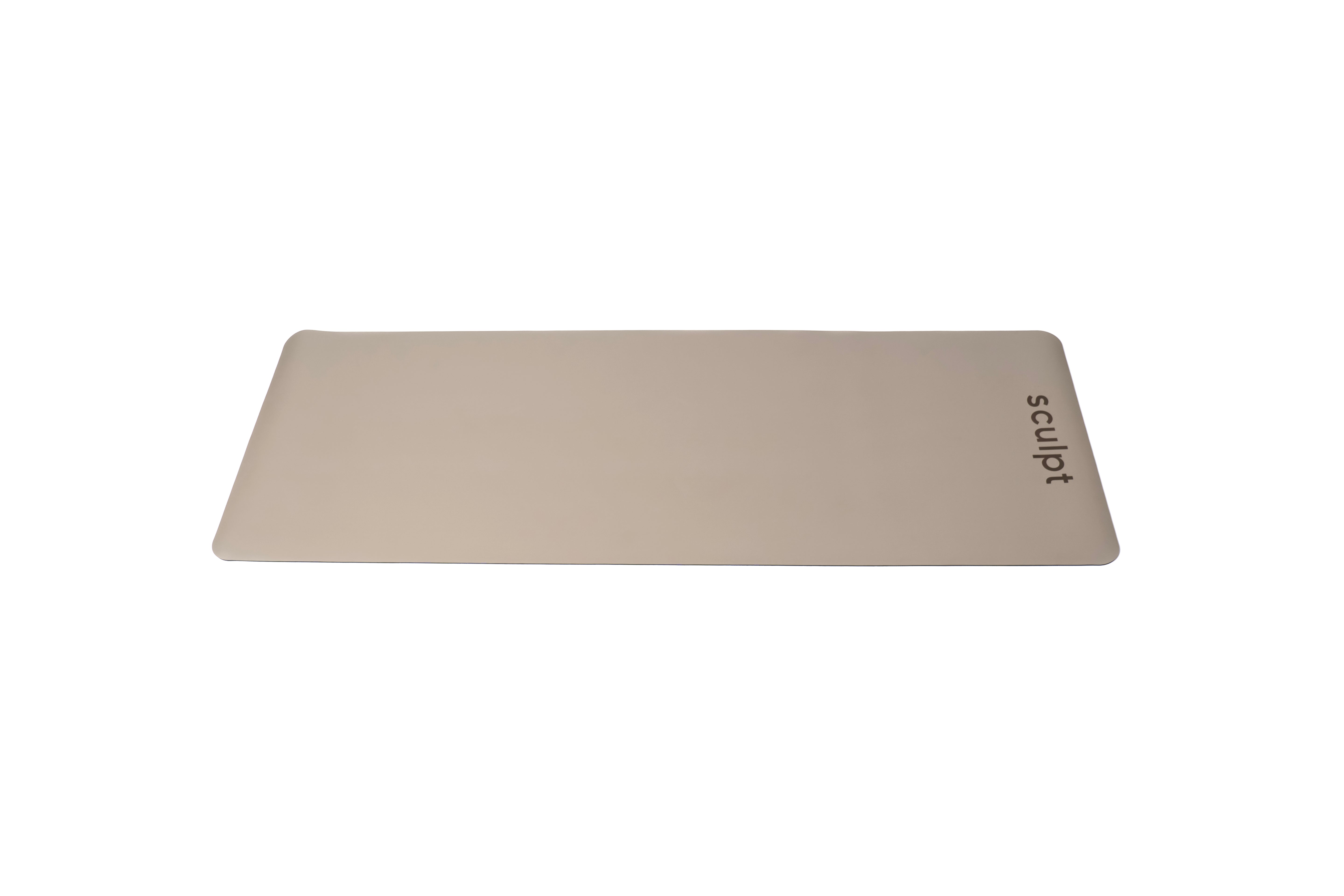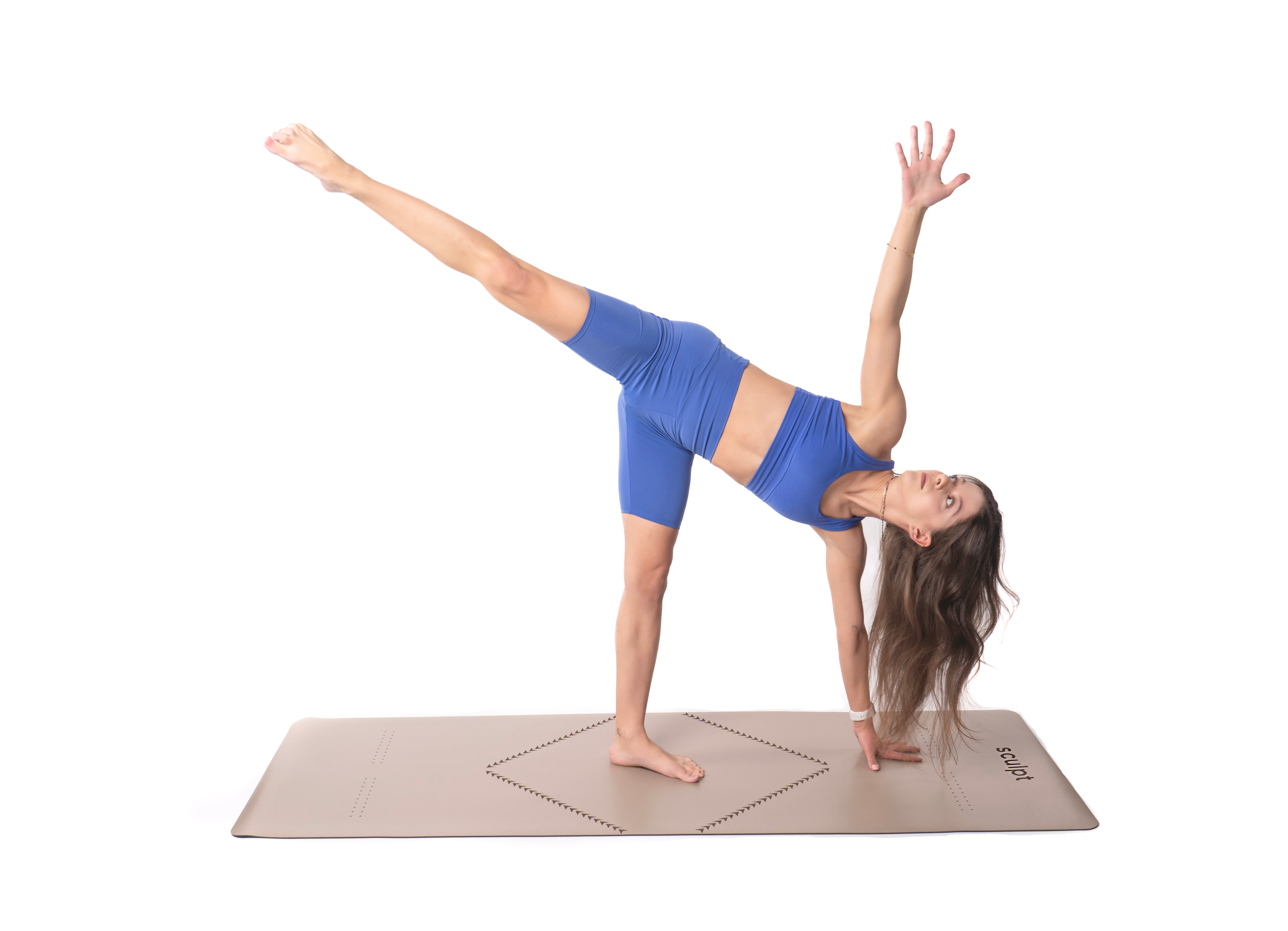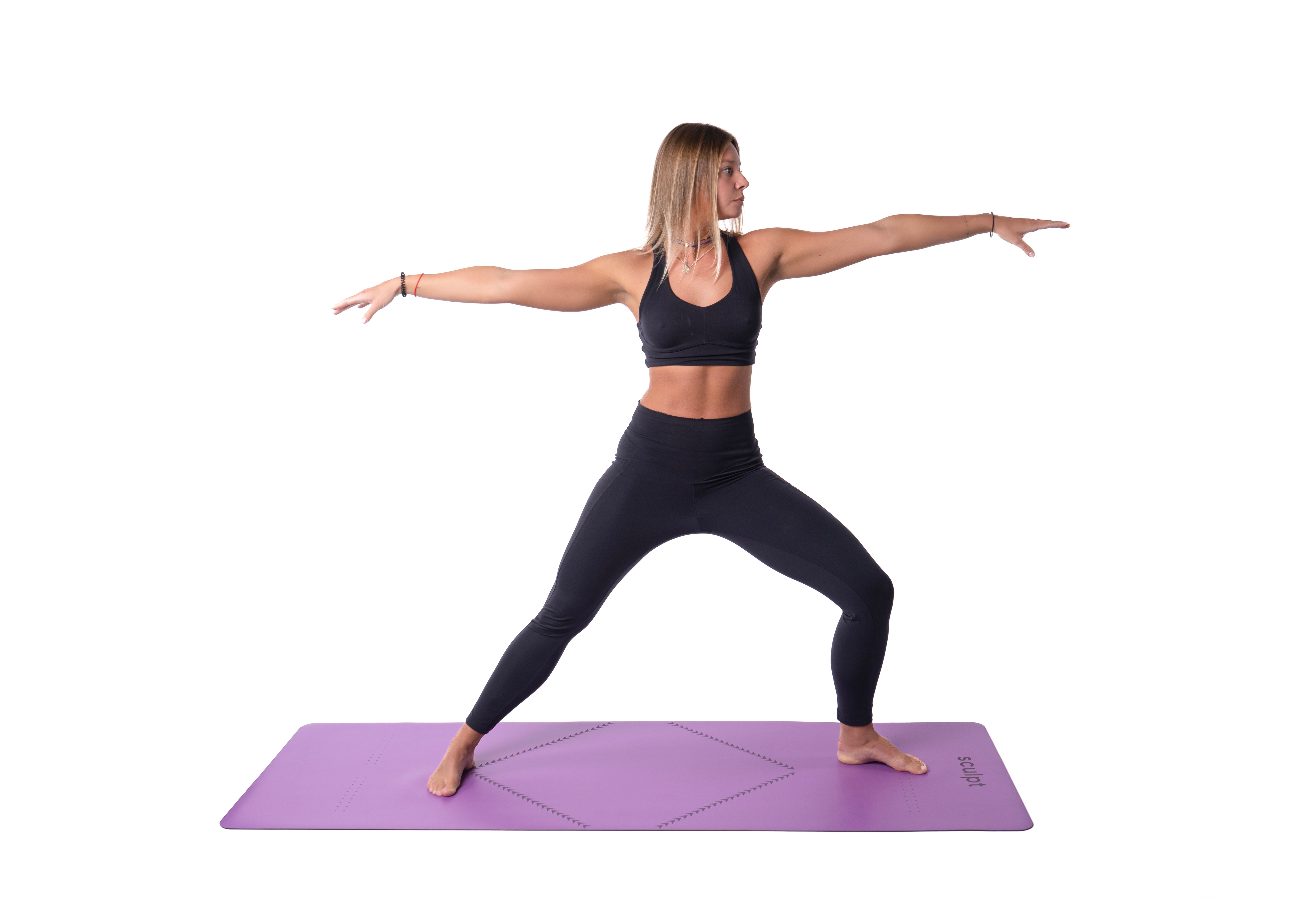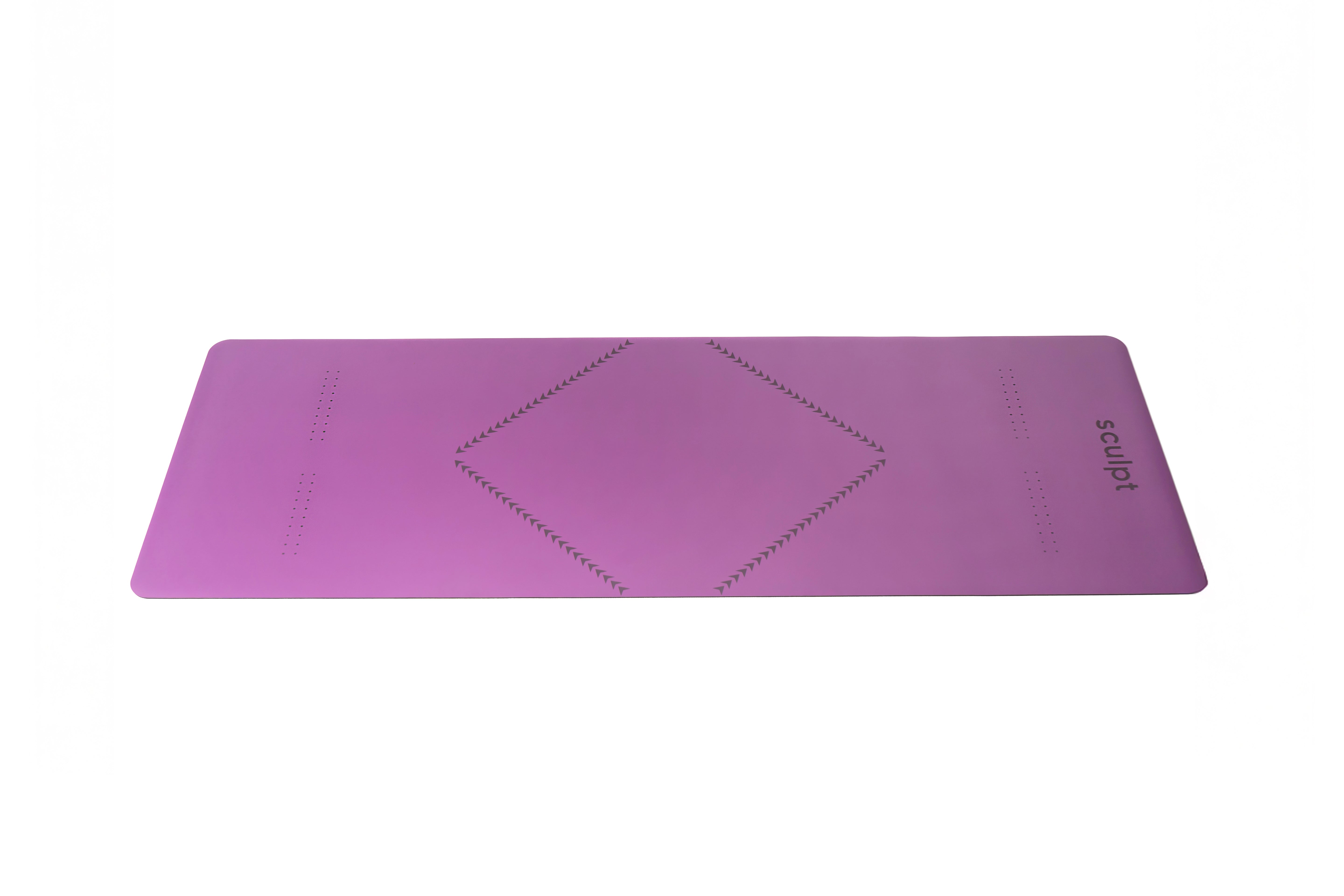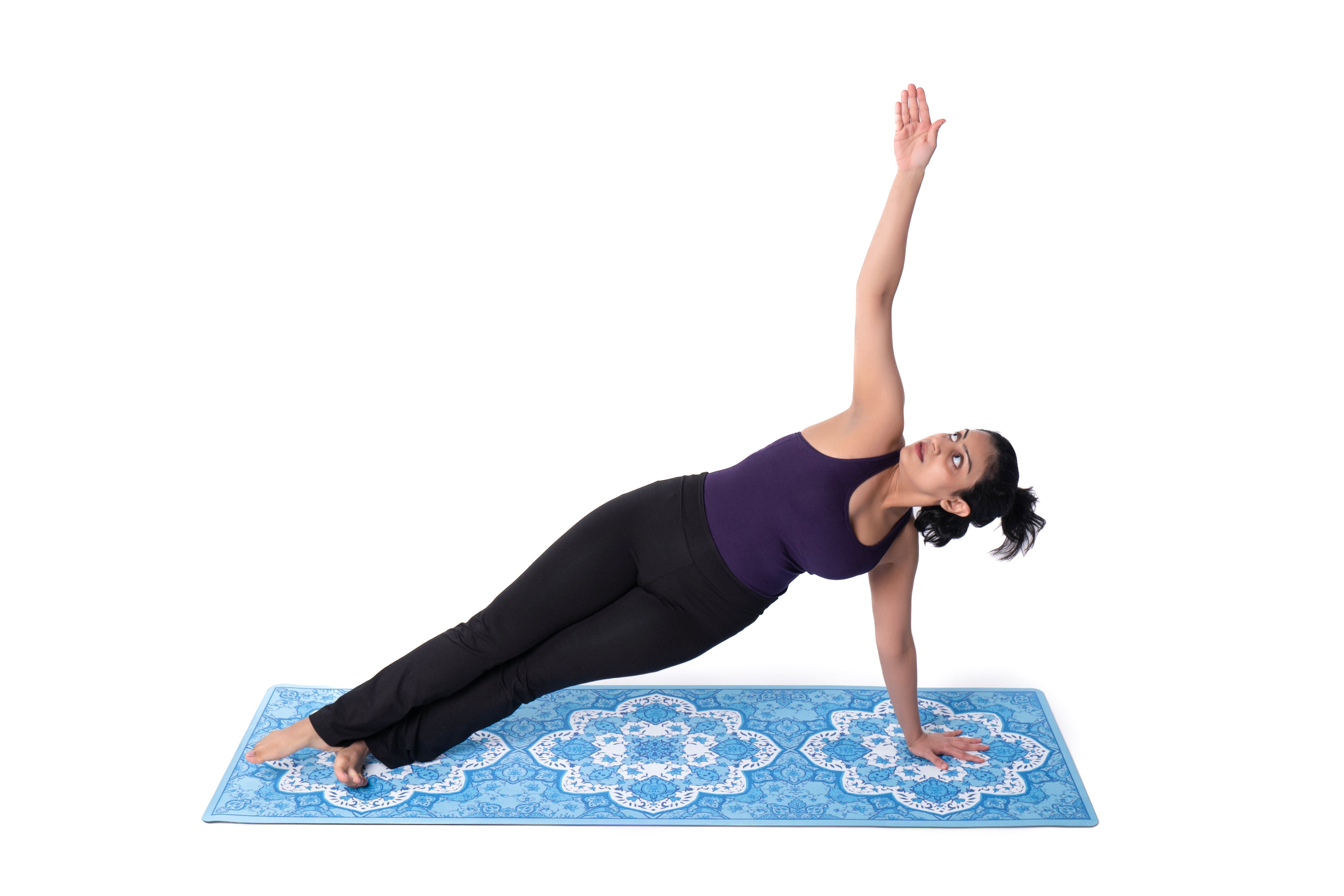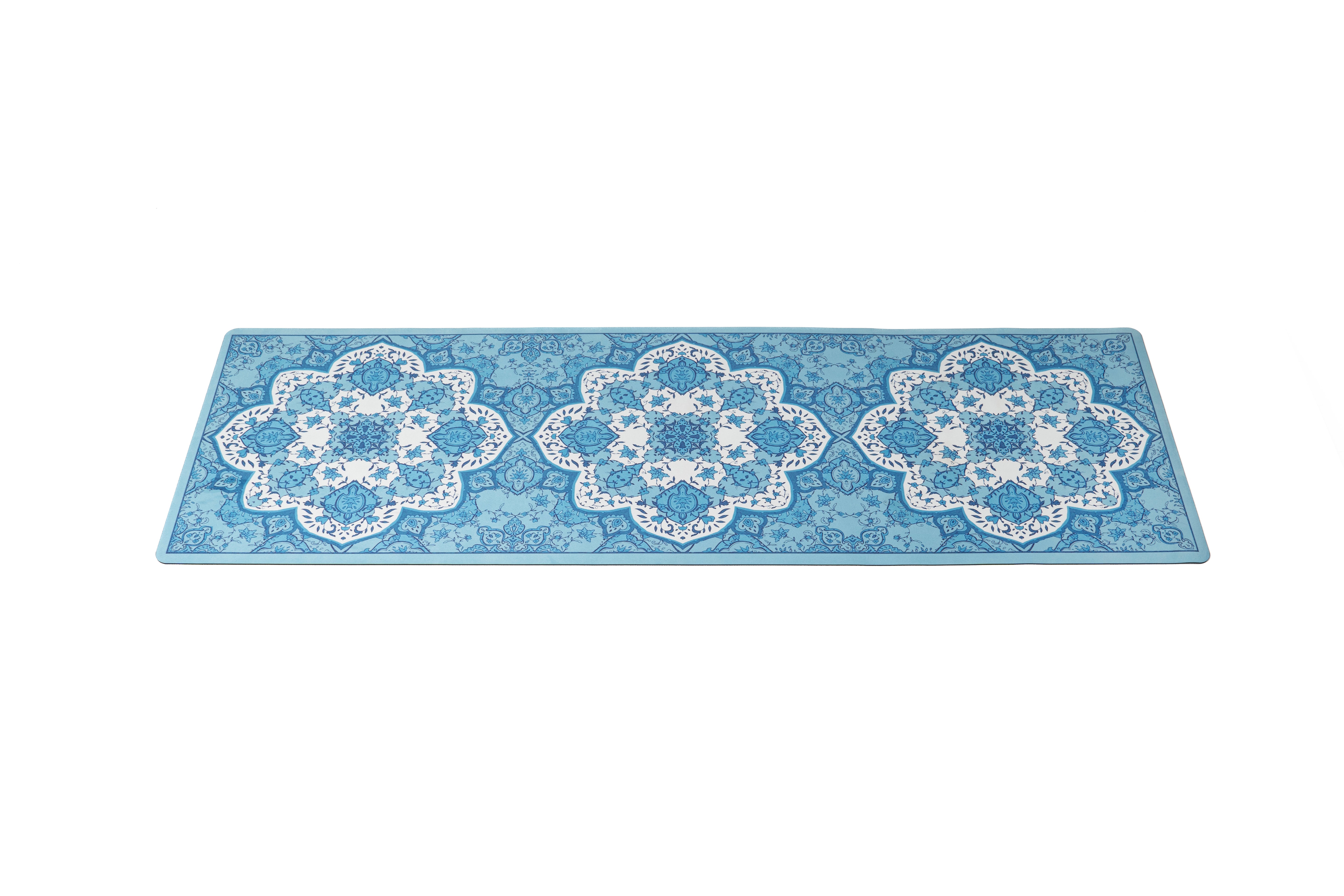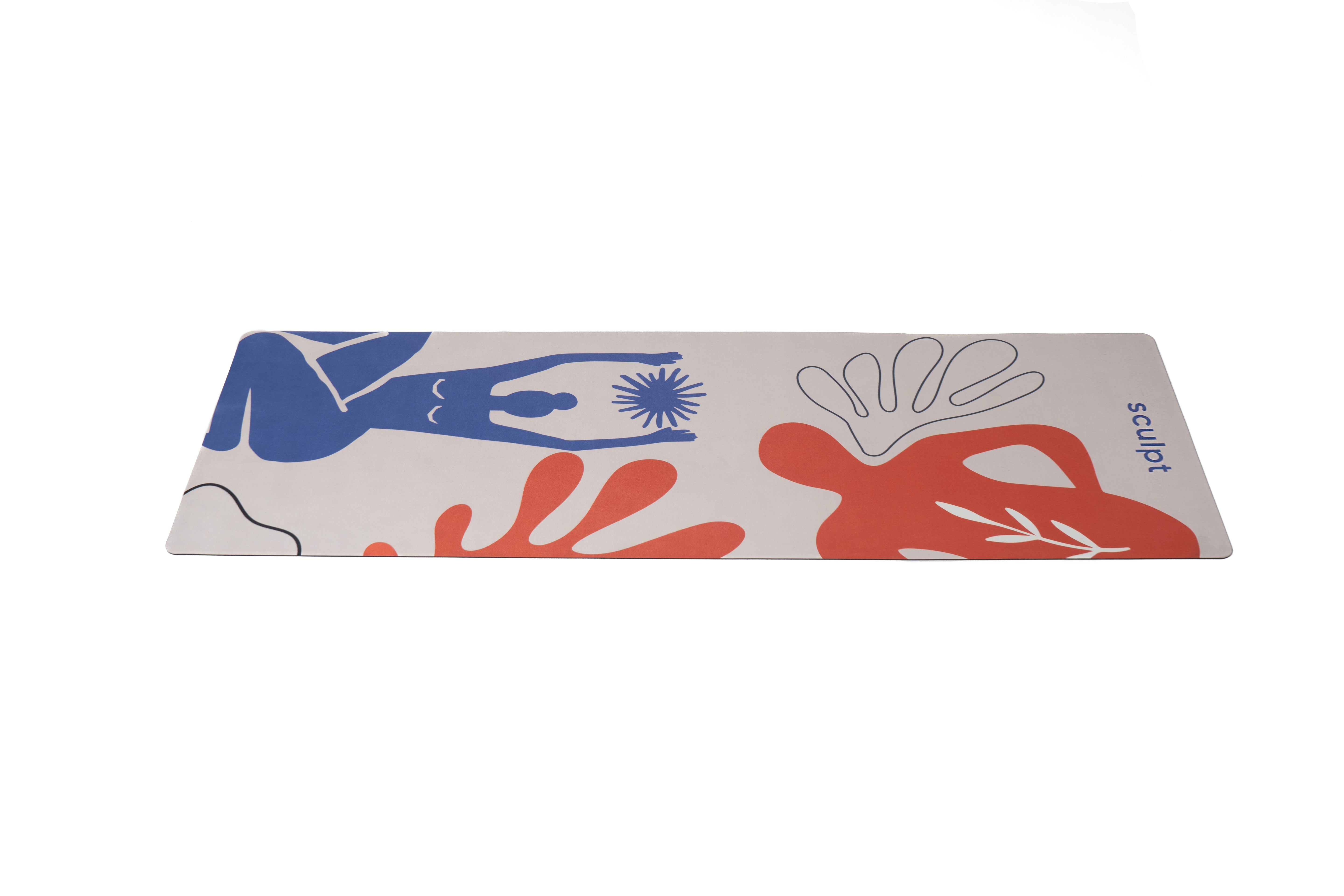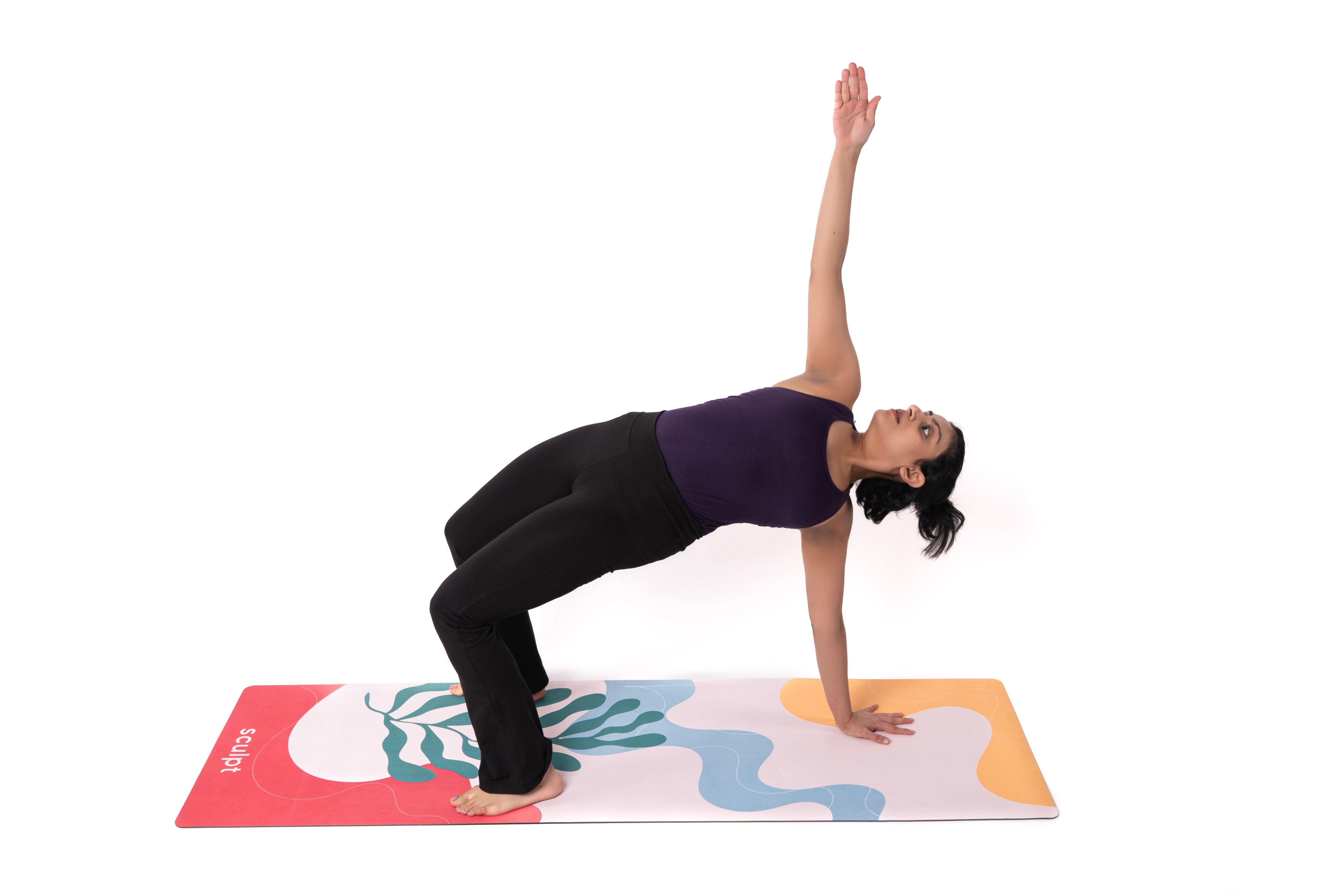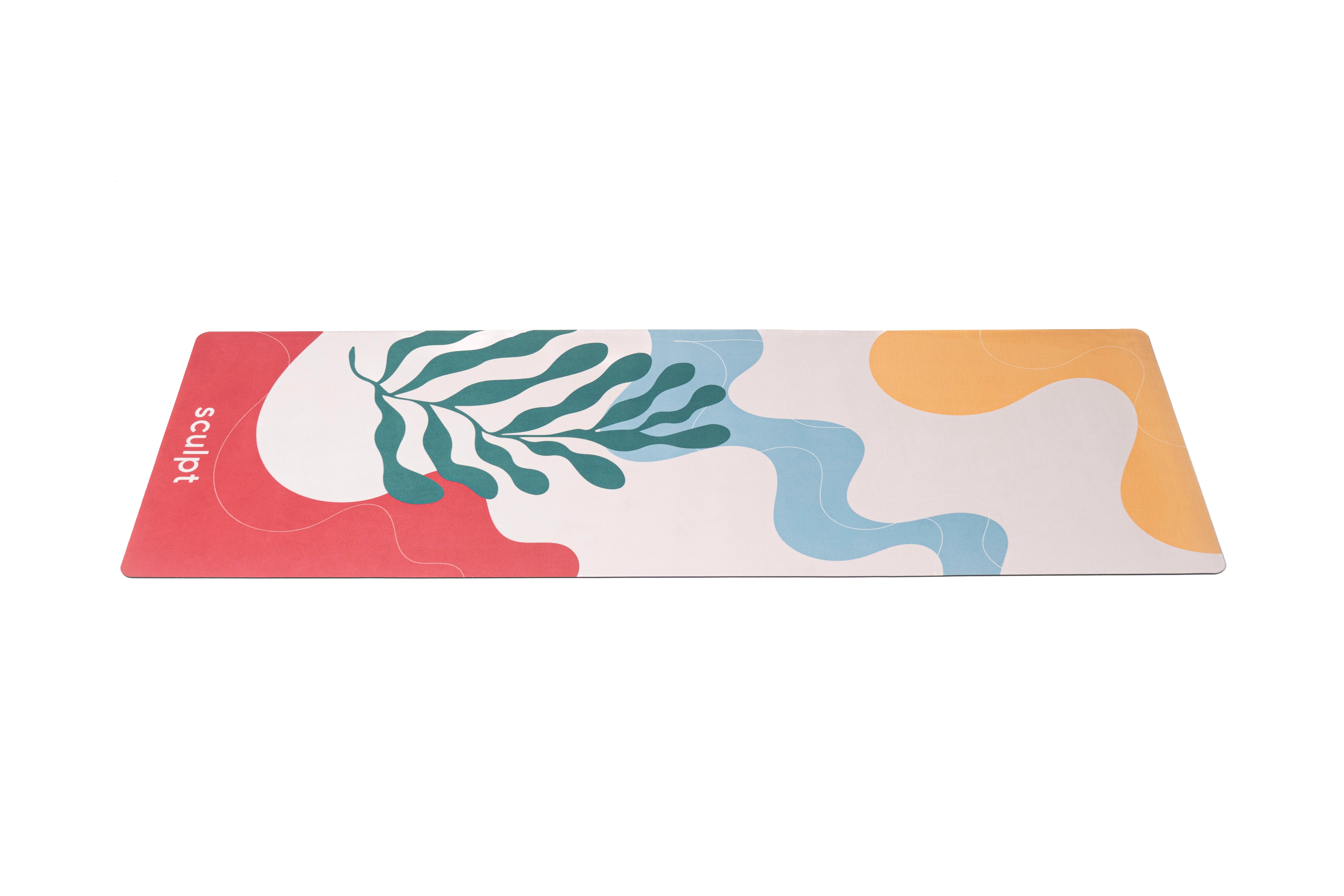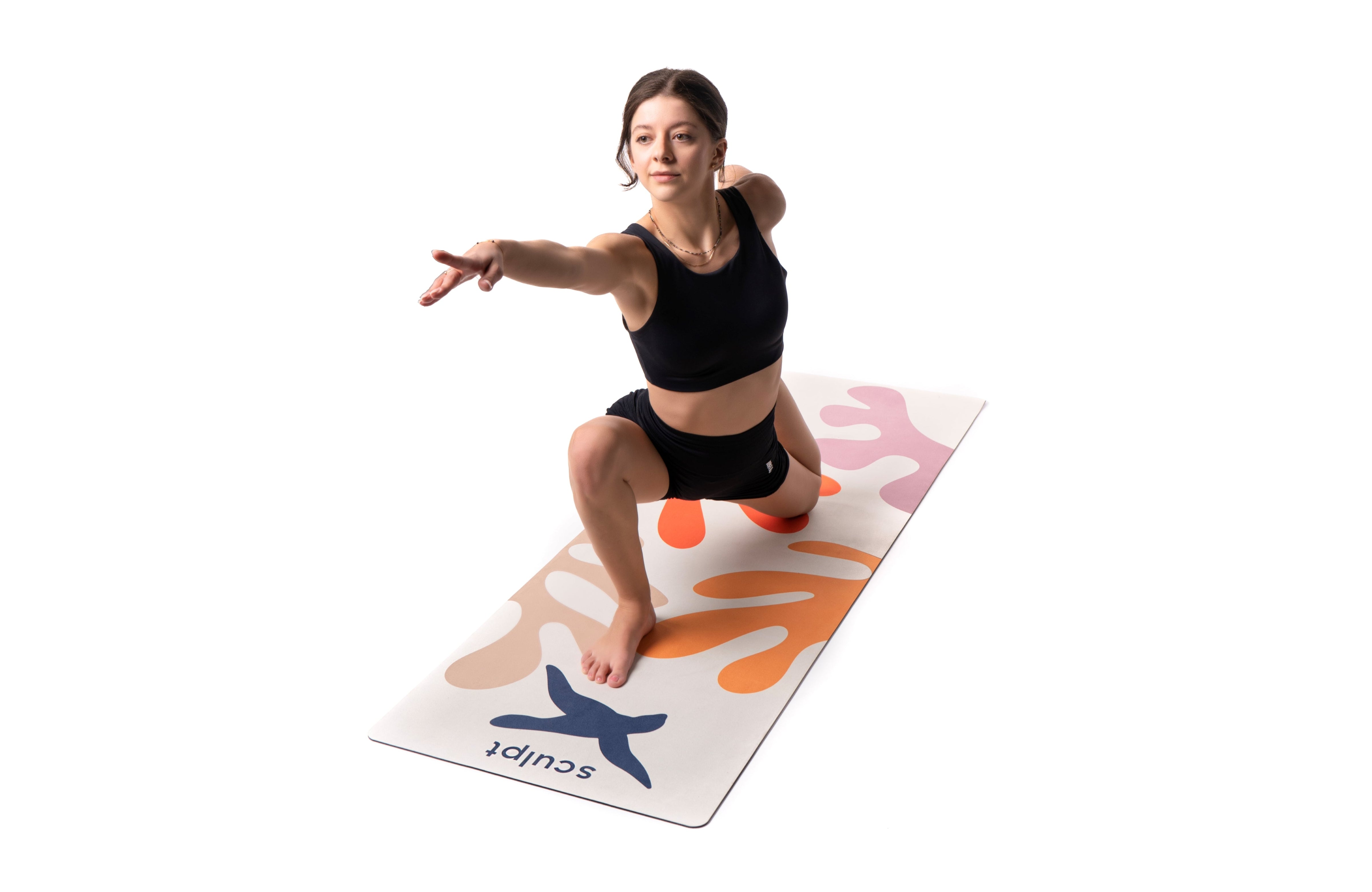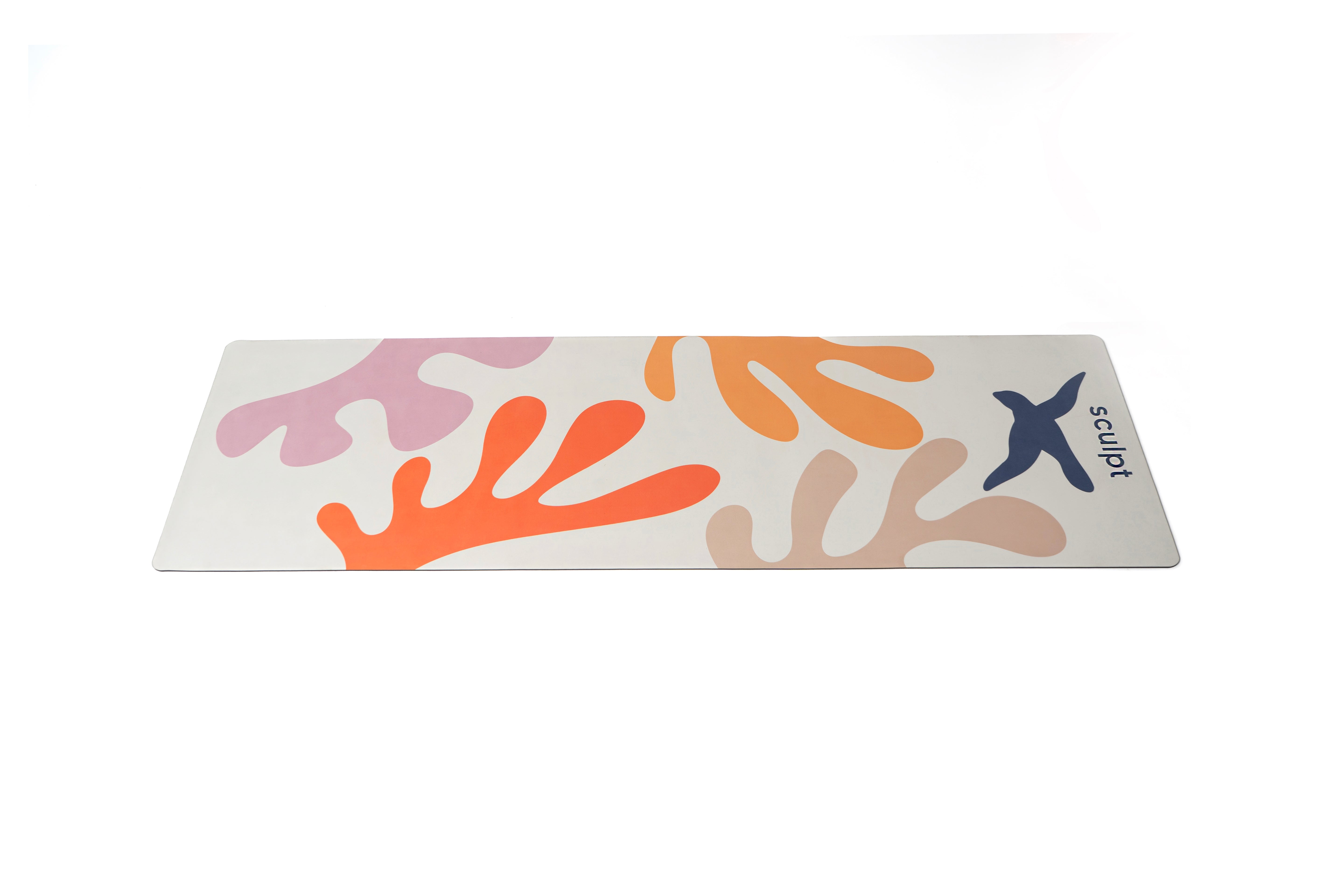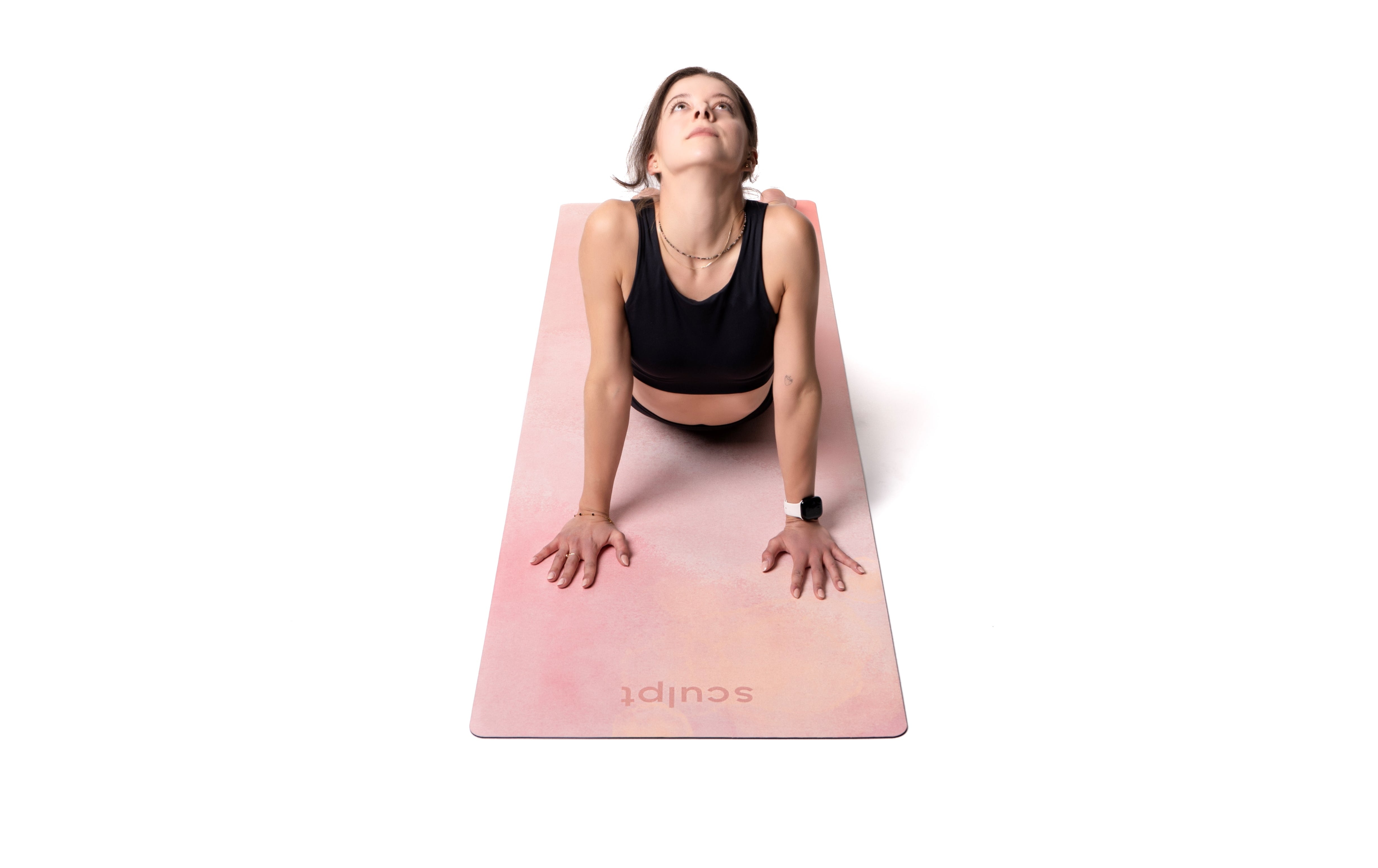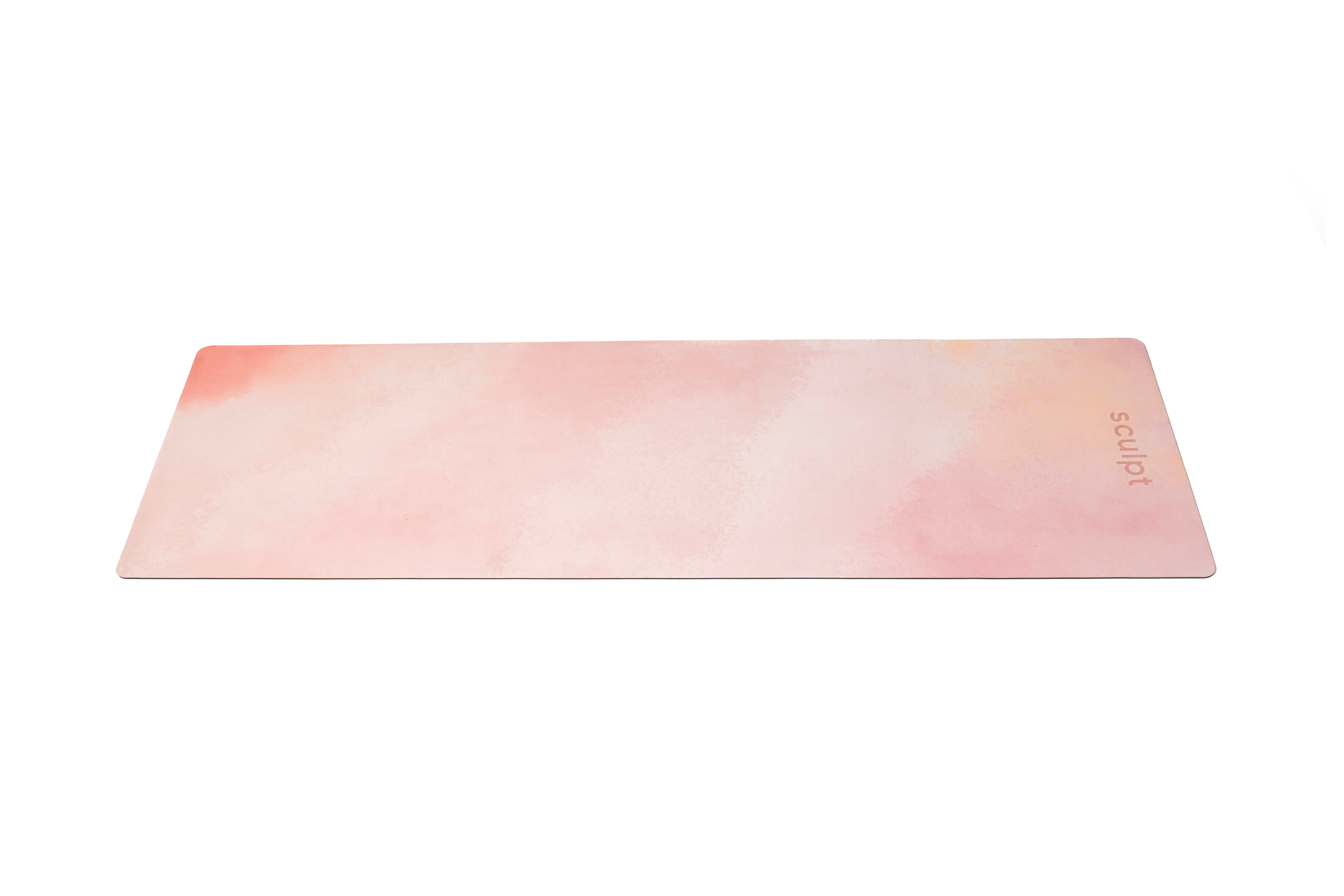How to Choose the Perfect Yoga and Exercise Mat for Your Practice
Choosing the right yoga mat is essential for elevating your practice. It’s not just about picking a pretty color or the cheapest option – it’s about finding a mat that supports your body, suits your style, and meets your needs. A great mat can provide comfort during floor exercises, stability in standing poses, and even reflect your values (like eco-friendliness). In this guide, we’ll break down the key factors to consider when selecting a yoga or exercise mat: thickness, grip, material, design & style, and intended use. By the end, you’ll know exactly what to look for in your ideal mat. Let’s dive in!
Thickness: Finding the Right Cushioning for Comfort and Balance
Why it matters: The thickness of a mat isn’t one-size-fits-all. The right thickness strikes a balance between comfort and stability, and the ideal choice depends on your body’s needs and the type of practice you do.
-
Thicker mats (5mm and up) – A thicker mat provides extra cushioning for your joints and is perfect if you crave more support. If you have sensitive knees or elbows, or you enjoy Pilates or floor workouts with lots of seated or supine poses, a plush 5mm mat (like our Pulse 5mm collection of mats) can be a game-changer. The added padding protects your spine and knees during exercises like crunches or tabletop positions. However, keep in mind that very thick mats (say 8–10mm, common for some Pilates mats) can feel a bit squishy, which might reduce stability in balance poses. Sculpt Pulse 5mm mats offer a happy medium – cushioning without making you feel unsteady.
-
Standard mats (3-4mm) – A standard yoga and exercise mat (around 3 or 4mm thick) offers a firmer, more grounded feel. Thinner mats are often preferred for dynamic yoga styles like Vinyasa or Ashtanga, where stability and balance are key. Because the mat is closer to the floor, you’ll feel more rooted in standing poses and transitions. If you have strong, healthy joints and you practice a lot of standing or balancing postures, a thinner mat can help improve your stability. They’re also a bit lighter and easier to carry around – a plus if you take your mat to classes or travel. Our Glow Yoga Mat - Prana is a perfectly designed 4mm mat offering comfort and design.
Tip: There’s no strict rule here – the best thickness is the one that makes you feel comfortable and secure. If you’re unsure, start around 4 mm (a happy medium) and adjust up or down based on how your body feels. Remember, you can always add a folded blanket under knees for extra padding if needed. The goal is to have enough support for comfort, while still feeling connected to the ground for balance. More here on choosing the right thickness.
Grip: Staying Grounded with a Non-Slip Surface
No one wants to slide in Downward Dog! Grip is what keeps you stable in every pose, preventing hands or feet from slipping. A high-quality mat should be antiskid (anti-slip) on both the bottom (against the floor) and the top surface (where you practice). Here’s how our Sculpt mats are designed to keep you grounded:
-
Bottom Grip: The base of our mats is made of natural tree rubber with a special non-slip pattern. This ensures your mat lies flat and sticks to the floor, whether you’re flowing on polished hardwood, carpet, or even outdoors. You won’t have to constantly readjust your mat or worry about it bunching up during a high-energy fitness session. A solid grip on the floor is especially important for workouts like energetic fitness or HIIT exercises – you can jump or stretch confidently, knowing your mat won’t skid away. (Pro tip: Always lay your mat on a clean, dry surface for the best floor grip.)
-
Top Surface Grip: The top layer of the mat is what your hands and feet press into, so it needs to provide traction even when you sweat. We offer two high-performance surface materials: PU (polyurethane) and microfiber (RPET). Our PU + Natural Rubber mats have a smooth, moisture-absorbing top that actually gets grippier the more you sweat – perfect for hot yoga or vigorous flow where sweaty palms are inevitable. If you’re into hot yoga, power yoga, or intense workouts, you’ll love that secure feeling (no more sliding in Warrior II!). Our Microfiber (RPET) + Rubber mats, on the other hand, have a soft, suede-like feel that provides great grip when dry (ideal for gentle yoga, stretching, or Pilates where you don’t perspire heavily). If you tend to sweat lightly or practice slower, restorative flows, the microfiber gives you a cozy touch with enough traction. (Fun fact: RPET microfiber is made from recycled plastic bottles, so it’s eco-friendly too – more on that later.)
Why grip matters: A reliable, non-slip mat lets you focus on your practice instead of worrying about falling. Whether you’re holding a challenging balance pose or transitioning quickly between exercises, good grip means safety and confidence. If you’ve ever used a cheap mat that turns into a slip-and-slide when you sweat, you know how frustrating (and dangerous) poor grip can be. Prioritize a mat that’s advertised as anti-slip or non-skid – it should lay flat and stay put on the floor and offer a sticky or high-traction top surface. All Sculpt mats are engineered to be anti-slip so you can stay grounded and fully in the moment.
Material: Choosing Eco-Friendly Durability (and Why It Matters)
The material of your yoga mat affects its longevity, performance, and environmental impact. It’s worth investing in a mat made from high-quality, eco-friendly materials – both for your own health and the planet’s. Here are the main materials you’ll encounter and why we’ve chosen ours:
-
Natural Rubber (with PU top) – Our premium mats use natural tree rubber as the base. Natural rubber is a renewable resource that provides excellent durability and resilience. It gives the mat a bit of weight (so it lays flat) and a slightly springy cushioning. We pair it with a PU top layer for ultimate grip. The result is a mat that can withstand daily practice without tearing or flaking, and is biodegradable at the end of its life. If you’re a serious practitioner or plan to use your mat for years, a natural rubber yoga mat is a fantastic investment – it won’t wear out like cheap foam mats do. Plus, it’s free from toxic chemicals found in some plastics. (Our mats contain no PVC, no formaldehyde, and no phthalates, so you can breathe easy on the mat.)
-
RPET Microfiber (Recycled) – Another innovative material we use is RPET, which stands for Recycled PET (the same plastic used in water bottles). The top of our microfiber mats is made from recycled fibers, giving plastic waste a second life as a beautiful suede-like surface. This material is not only eco-conscious but also durable and washable. It’s bonded to a natural rubber base for support. An RPET + rubber mat is a great choice for eco-minded yogis who want a balance of comfort and sustainability. The microfiber texture is gentle on skin and actually gets a bit grippier if you mist it with water before a sweat-free session (a known trick for microfiber mats). By choosing a mat with recycled content, you’re directly reducing plastic waste and supporting a more sustainable product cycle.
-
Avoid PVC Mats (Vinyl) – You’ll find plenty of cheap PVC mats on the market, but here’s the truth: PVC (polyvinyl chloride) is a material to avoid for both health and environmental reasons. PVC mats often have a strong chemical smell; that “new mat smell” is actually off-gassing of toxins. They are not biodegradable or easily recyclable, and manufacturing PVC releases harmful chemicals into the environment. Even in use, a PVC mat can wear out quickly – peeling, ripping, or losing grip – meaning you’ll replace it sooner (costing you more in the long run and creating more trash). While the low price tag is tempting, a PVC mat is not worth it. It’s better to spend a bit more on a quality rubber or TPE mat that will last years and keep toxins out of your practice.
Bottom line: Look for mats made of natural rubber, PU, cork, or recycled materials and steer clear of cheap PVC. High-quality materials ensure your mat will be durable, supportive, and eco-friendly. Your yoga mat is an investment in your practice – and in the planet. By choosing sustainably, you align your purchase with the yogic values of ahimsa (non-harming) towards the Earth.
All Sculpt mats are PVC-free and made with planet-friendly materials, so you can’t go wrong! For example, our Glow Collection mats are made of natural rubber and microfiber, combining artistry with sustainability. Read more on our committment to sustainability.
Design & Style: Express Yourself and Enhance Your Practice
Yoga mats come in a dazzling array of colors, patterns, and even printed alignment guides. While looks aren’t everything, the design and style of your mat can absolutely influence how you feel during practice. You want a mat that you’re excited to unroll each day! Here are two aspects of design to consider:
-
Personal Style & Motivation: Your mat is a personal space that can reflect your taste and inspire your practice. Do you love calm, muted tones that create a zen vibe? Or bold, vibrant prints that energize you? There’s no wrong answer. What matters is that when you look at your mat, it sparks joy and motivates you to get moving. For some, a beautiful design (like the artistic prints in our limited-edition Glow mats) can make each practice session feel special. Others prefer a simple single-color mat that helps them feel serene and focused. Choose a color or pattern that resonates with you – you’ll be more likely to roll it out often. Remember, your yoga mat is an extension of your personality and your commitment to self-care. If a stylish, premium-looking mat makes you feel like a yogi superstar, then go for it!
-
Alignment Guides & Size: Some mats are designed with practical markings – like subtle lines or patterns – to help with alignment. These are super helpful, especially if you’re a beginner or working on refining your poses. Lines can indicate where to place your feet or hands in common postures (e.g., Warrior II, Downward Dog) so you know you’re in the right stance. If you’re interested in this, look for mats with alignment lines or consider Sculpt's Axis mats (which are extra large and come with alignment guides for more precise positioning). Additionally, consider the dimensions of the mat: Standard mats are about 24” (61cm) wide and 68” (173cm) long. If you’re taller than about 5’10” (178cm), you might appreciate an XL mat (longer and a bit wider) so you don’t hang off the edges. A larger mat gives you more room to stretch out – great for fitness routines or Pilates where you might lie fully extended. Sculpt's Axis mat collection, for instance, offers extra spacious mats (185 cm x 68 cm ) – ideal if you want that luxury of space or if you’re taking your mat to the gym and might do varied exercises on it.
Putting style to use: A mat’s design isn’t just about looks – it can serve a purpose. Dark vs light colors can hide or show dirt (a consideration if you’ll use it outdoors). Texture patterns can add grip. Ultimately, pick a design that makes you feel happy, confident, and ready to practice. When your mat aligns with your style and needs, it creates a positive association that can encourage you to get on the mat more often – and consistency is where you’ll see progress in yoga or any fitness routine.
Intended Use: Yoga, Pilates, Fitness – Find a Mat that Fits Your Activities
What will you be doing on your mat? Consider your main activities, because a mat that’s great for a gentle yoga stretch might differ from one needed for high-intensity training. Here’s how to match your mat choice to your workouts:
-
For Yoga Practice: If you’re primarily doing yoga (whether it’s Hatha, Vinyasa, Yin, etc.), focus on a well-rounded mat. You’ll want decent cushioning for kneeling poses, excellent grip (especially if you do any downward dogs or standing flows), and a surface that feels good under hands and feet. Most yogis do fine with a standard 4mm mat, but if you like slower, restorative yoga or have joint sensitivity, lean toward 5mm for comfort. Also think about the style: if hot yoga is your thing, a mat with a PU top or a towel-like surface is almost a must to handle the sweat. If you practice gentle or Iyengar yoga, alignment lines might be really useful. Essentially, for yoga you want a true yoga mat – one that balances grip and cushion so you can hold poses securely. All Sculpt mats are designed as yoga mats first and foremost, so they check these boxes.
-
For Pilates & Floor Work: Pilates routines involve a lot of floor-based movements (rolling like a ball, spine articulation, abdominal work) and often require even more cushioning. Traditional Pilates mats are thicker than yoga mats – sometimes 8mm or more – to protect the spine. You might not want to go that thick if you also do standing exercises, but if Pilates or core workouts are a big part of your routine, opt for a mat on the thicker side (5mm is a good compromise that our Pulse mat provides). A slightly softer mat will make exercises like the Hundred or leg lifts more comfortable on your back and tailbone. Grip is slightly less of a concern in Pilates (since there are fewer standing poses), but you still want anti-slip on the floor so the mat stays put during leg stretches and transitions. Our recommendation: use a 5mm anti-slip fitness mat (like Sculpt’s Pulse) for mixed yoga/Pilates use. It will cushion you well and still work for the occasional down-dog or warrior pose. If you’re very tall or need space for exercises, consider an extra-long mat so your head and feet stay on the mat throughout all movements.
-
For Fitness, HIIT or Gym Workouts: Planning to use the mat for general home workouts, stretching, or gym classes? Look for durability and support. You might be doing anything from planks and push-ups to aerobic steps on this mat. In these cases, thickness and grip are crucial. A good fitness mat should be thick enough to absorb impact (again, ~5mm is great for most) and have a non-slip surface because you might be moving around quickly. Also, consider that shoes can scuff mats – if you’ll wear sneakers on it, choose a mat with a tough surface (PU holds up better than a soft foam mat which could tear under shoes). If you take your own mat to the gym, you’ll want something lightweight to carry but still supportive – perhaps a foldable thin mat or just accept a bit more weight for better padding. Thankfully, natural rubber mats are quite durable for this purpose; just avoid doing activities that involve sharp objects on the mat (like using dumbbells directly on it, which could dent it). A multipurpose training mat like those in our collection can seamlessly go from yoga class to ab workout to a post-workout stretch on the floor. Versatility is key here.
In short, think about whether your mat will mainly be a yoga buddy, a Pilates cushion, or an all-around exercise pad. Match the mat’s features to your primary use. You may even choose to have two mats – for example, a thinner travel or studio mat for yoga on the go, and a thicker mat at home for Pilates and conditioning. But if you want one mat to do it all, aim for something in the middle (around 5mm, good grip) and you’ll be prepared for any style of workout.
Comfort & Texture: Don’t Overlook the “Feel” Factor
One often overlooked factor in choosing a mat is how it feels to the touch. During yoga or exercise, your hands, feet, knees, and even face might press into the mat – the tactile experience can affect your comfort and focus.
-
Smooth vs. Textured: Some mats have a smooth surface (like our PU-top mats, which have a silky, matte feel), while others have a slight texture or fabric finish (like our microfiber-top mats, which feel like soft suede). A smooth PU mat can feel luxurious and clean, and it won’t distract you with any fabric bunching – great for flowing quickly between poses. A microfiber mat feels cozy and soft, which you might appreciate in slower practices or whenever you lie down for savasana. Consider which sensation you prefer: sleek and grippy, or soft and tactile?
-
Firmness: Different materials can make the mat feel firmer or squishier. For example, natural rubber is dense and gives a supportive, firm cushion (you won’t sink in too much, which is good for stability). Some inexpensive foam mats might feel very squishy at first but then compress flat under weight (offering little support). Our mats use a high-density rubber that strikes a nice balance – a bit of give for comfort, but overall a stable platform. When you press your palm into a mat, notice if it has a little rebound (good quality) or if it collapses. A comfortable mat isn’t just about thickness; it’s about the quality of the foam or rubber.
Ultimately, the mat’s feel should be inviting to you. You’ll be more inclined to practice if you love the way your mat feels under you. Think about whether you like barefoot on rubber or barefoot on fabric. Neither is right or wrong; it’s personal preference. If possible, touch different mats or read reviews (many yogis will mention if a mat is “super sticky” or “nice and soft”). When you find one that sounds like your kind of comfort, that could be the perfect mat for you.
At Sculpt, we offer both textures: the Eco PU series for that smooth, grippy feel, and the RPET microfiber series for a warm, textured feel. You can’t go wrong – it’s more about which you’ll enjoy more during practice.
Conclusion: Invest in the Perfect Mat for You + Our Top Picks
Your yoga mat is more than just a piece of rubber – it’s the foundation of your practice. The perfect mat will help you feel supported in each yoga pose, comfortable during Pilates or floor exercises, and confident that you won’t slip when things heat up. By considering thickness, grip, material, design, and intended use, you’re well on your way to finding a mat that checks all your boxes.
Let’s recap the essentials for choosing your ideal mat:
-
Thickness: Match the mat’s thickness to your comfort needs. Thicker for cushioning (great for Pilates or sensitive joints), thinner for stability (great for dynamic yoga flows).
-
Grip: Non-slip is non-negotiable. A good mat offers excellent floor grip and top surface traction (especially if you sweat). Stay away from anything that slides around – safety first!
-
Material: Opt for eco-friendly, durable materials like natural rubber or recycled content. They last longer and align with a healthy lifestyle. PVC mats might be cheap, but the trade-offs in grip, longevity, and environmental harm aren’t worth it.
-
Design & Size: Pick a style that inspires you – you’ll practice more when you love your mat. Also, consider alignment markers if you need guidance, and larger sizes if you want more space.
-
Intended Use: Be clear on how you’ll use the mat. For mostly yoga, get a solid all-purpose yoga mat. For Pilates or general workouts, lean towards a slightly thicker, robust exercise mat. If doing both – find a happy medium or invest in one high-quality mat that can handle a bit of everything (like our Sculpt mats designed for yoga and fitness).
At the end of the day, the best yoga mat is the one that makes you excited to practice. It should feel like an extension of your body and style. Don’t be afraid to invest in a quality mat – a well-made mat can last for years of daily use, whereas a bargain mat might wear out in months. Your practice deserves the support and you’ll notice the difference immediately when you upgrade to a mat that truly suits you.
Ready to unroll a better practice? Discover our yoga and exercise mat collection.
If you’re looking for a place to start, check out our full collection of yoga & exercise mats at Sculpt. We’ve crafted each mat with premium materials and thoughtful design to meet various needs – whether you need an ultra-grippy mat for hot yoga, a cushioned mat for Pilates, or a gorgeous design to motivate your daily flow. With the right mat under you, there’s nothing stopping you from reaching new heights (and stretches!) in your practice.
Happy mat hunting, and namaste!

